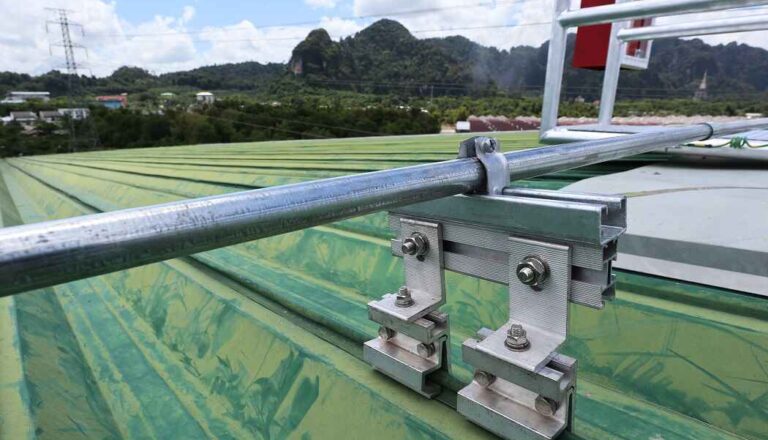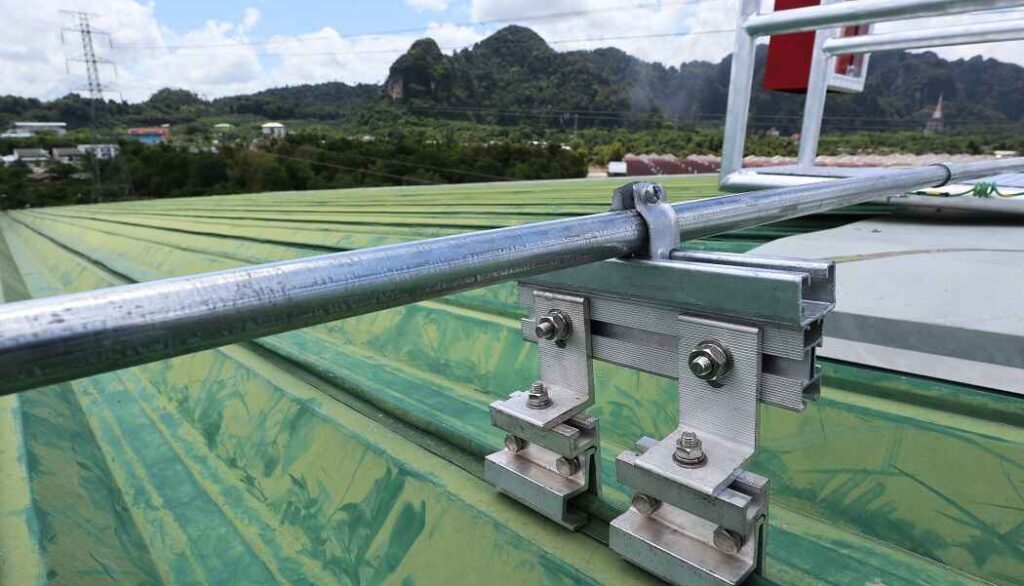
Can You Paint EMT Conduit?
Yes, painting EMT conduit is permissible as long as you adhere to NEC regulations and take precautions to maintain grounding continuity. Proper surface preparation, the choice of appropriate paint, and careful installation are essential to ensure the safety and longevity of the electrical system.

So, are you ready to add a splash of color to your electrical installations? Discover how you can transform an ordinary EMT conduit into a vibrant statement with a few strokes of paint.
Can You Paint EMT Conduit?
Yes, you can paint EMT (Electrical Metallic Tubing) conduit. But, there are some important considerations to keep in mind when deciding to paint EMT conduit, primarily centered around maintaining grounding continuity and ensuring the safety and functionality of the electrical system.
The National Electrical Code (NEC) does not explicitly prohibit painting EMT conduit, but it does have strict guidelines to maintain electrical safety.
EMT conduit is commonly used in electrical installations to protect and route electrical wiring. Painting EMT conduit can serve both aesthetic and protective purposes. It can help blend the conduit with its surroundings, making it less conspicuous, and also protect it from environmental factors such as corrosion and rust. However, it’s crucial to follow specific guidelines to ensure that painting does not compromise the electrical system’s integrity.
The most critical consideration when painting EMT conduit is maintaining grounding continuity. Grounding is a fundamental safety aspect in electrical systems, and any interruption in the grounding path can lead to electrical hazards. To preserve grounding continuity, it is recommended to paint the conduit after it has been installed and connected properly. This way, you can avoid any issues related to paint interfering with grounding connections during installation.
EMT conduit is made of galvanized steel, which has a protective zinc coating to prevent corrosion. This galvanized surface can be more challenging to paint than bare metal. It can interfere with paint adhesion, so proper preparation is necessary to ensure a successful paint job.
choose a paint that is compatible with galvanized surfaces and can adhere effectively. It is imperative to ensure that the chosen paint does not interfere with the grounding or bonding requirements of the electrical installation. Consulting a paint specialist or the conduit manufacturer for suitable paint options is advisable.
While painting EMT conduit is not prohibited, it’s essential to be aware of any local building codes or regulations that may have specific requirements or restrictions regarding conduit painting. Always consult with a qualified electrician or electrical inspector to ensure that your painting process complies with local regulations and safety standards.
How to Paint EMT Conduit?
Painting EMT conduit can be a simple and rewarding DIY project. By following a few essential steps, you can achieve a professional-looking finish that not only improves the conduit’s aesthetics but also prolongs its lifespan. Here’s a step-by-step guide to painting EMT conduit:
Materials and Tools You’ll Need:
- EMT conduit
- Sandpaper (medium grit, around 120-150)
- Wire brush or steel wool
- Cleaning solvent or degreaser
- Painter’s tape
- Drop cloths or plastic sheeting
- Rust inhibiting primer (optional)
- Spray paint or paintbrush and paint
- Safety goggles and gloves
- Respirator mask (if working indoors or in a poorly-ventilated area)
- Ladder (if needed)
- Rags or paper towels
- Grounding clamps or connectors
- Grounding bushings or grounding locknuts
Step-by-Step Guide:
Step 1: Prepare Your Workspace
- Choose a well-ventilated area for painting. If you’re indoors, ensure proper ventilation and consider using a respirator mask.
Lay down drop cloths or plastic sheeting to protect the surrounding area from paint splatter.
Safety Precautions: - Wear safety goggles and gloves to protect your eyes and hands.
Step 2: Prepare the Conduit
- If the EMT conduit is new, you may need to remove any oil or grease residues. Use a cleaning solvent or degreaser to clean the conduit thoroughly. Allow it to dry completely.
- If the conduit is old or has rust, use a wire brush or steel wool to remove rust and loose debris. Sand the surface with medium-grit sandpaper (around 120-150) until it feels smooth to the touch. Wipe off any dust or debris with a rag.
Step 3: Mask Off Areas
- Use painter’s tape to mask off any areas or components of the conduit that you don’t want to paint, such as threaded ends or connectors.
Step 4: Priming
- If you want to provide extra protection against rust, you can apply a rust-inhibiting primer. Follow the manufacturer’s instructions for application and drying times. This step is especially important if the conduit will be exposed to outdoor elements or damp environments.
Step 5: Grounding Considerations
- Avoid painting the threads at both ends of the conduit to ensure secure attachment of fittings and connectors.
- Leave a small, unpainted section near the grounding clamps or connectors to ensure a direct metal-to-metal contact for grounding.
- Use grounding bushings or grounding locknuts that are designed to make direct contact with the conduit and provide a path for grounding continuity.
Step 6: Painting
- Shake the spray paint can vigorously for at least one minute (if using spray paint).
- Hold the spray paint can or paintbrush about 6-8 inches away from the conduit.
- Apply an even coat of paint, moving the can or brush in a steady, sweeping motion. Overlap each pass slightly to ensure complete coverage.
- Wait for the first coat to dry according to the manufacturer’s instructions, usually about 20-30 minutes. You may need to apply multiple coats for full coverage.
- If using a paintbrush, use long, even strokes to apply the paint. Allow each coat to dry before applying the next one.
Step 7: Drying
- Let the painted conduit dry completely. This can take several hours to a full day, depending on the type of paint and environmental conditions.
Step 8: Inspect and Touch Up
- Inspect the conduit for any missed spots or imperfections. Touch up these areas as needed.
Step 9: Clean Up
- Dispose of used materials, such as paint cans or brushes, according to local regulations.
- Remove painter’s tape carefully while the paint is still slightly tacky to avoid peeling.
Step 10: Final Check
- Once the paint is fully dry, inspect the conduit one last time to ensure it is evenly coated and there are no defects.
By following these steps, you can effectively paint EMT conduit while maintaining grounding continuity, which is crucial for the safety and functionality of your electrical system. Proper surface preparation, grounding considerations, and paint application are essential for a durable and safe finish.
Check this Video:
Tips for Best Painting EMT Conduit
Take a look at some useful tips to help you achieve the best painting results for your EMT conduit, ensuring a durable and visually appealing finish.
- Clean the conduit thoroughly before painting.
- Use a primer designed for metal surfaces.
- Choose high-quality paint for metal with corrosion resistance.
- Decide between using a brush or spray for application.
- Apply multiple thin coats of paint, allowing each coat to dry completely.
- Allow sufficient drying time between coats and after the final coat.
- Protect surrounding areas from paint splatters or drips.
- Check weather conditions for optimal drying conditions.
- Consider applying a clear coat for added protection and a glossy finish.
- Regularly inspect and touch up any damaged or chipped areas.
What Kind of Paint Do You Use on Conduit?
When selecting a paint for conduit, it’s crucial to consider factors such as the material of the conduit, whether it’s indoor or outdoor, and any special requirements such as heat resistance or electrical insulation. While specific brand names may vary, here are some commonly known paint brands that offer suitable options:
Rust-Oleum enamel spray paint: Rust-Oleum is a well-known brand that offers a range of paints suitable for metal surfaces, including conduit made of steel or aluminum.
Specifically, for painting conduit, you can consider using Rust-Oleum enamel spray paint. It provides excellent adhesion and protection against rust and corrosion. When selecting a specific Rust-Oleum enamel spray paint, look for options labeled for use on metal and ensure they provide rust-inhibiting properties.
Sherwin-Williams: Sherwin-Williams is a reputable brand offering a range of paints suitable for both indoor and outdoor conduit applications. They have options specifically formulated for metal surfaces and PVC.
Behr: Behr is another well-known brand that offers various paint options for different surfaces. They have paints suitable for metal and PVC conduits.
Can You Powder Coat EMT Conduit?
Yes, EMT (Electrical Metallic Tubing) conduit can be powder coated.
Powder coating is a durable and decorative finish that is commonly applied to metal surfaces, including EMT conduit. The process involves applying a dry powder to the conduit and then baking it to create a tough, smooth, and attractive coating. Powder coating provides excellent protection against corrosion and can enhance the appearance of the conduit while maintaining its electrical properties.
Can You Paint Electrical Metal Conduit?
Yes, you can paint electrical metal conduit for aesthetic purposes and corrosion protection.
Use paint and primer products that are specifically designed for use on metal surfaces and suitable for outdoor or electrical applications. These products are typically labeled as such and can provide the necessary protection and adhesion for the conduit.
But, there may be certain regulations or guidelines that need to be followed when painting conduit in specific situations. It’s always a good idea to consult with a qualified electrician or check with local building codes to ensure compliance with any applicable regulations.
Conclusion
In conclusion, painting EMT conduit can be done to enhance its appearance and protect it from corrosion, but it must be done carefully to maintain grounding continuity and comply with relevant codes and standards. Painting should occur after installation to avoid any interference with grounding connections and to ensure the safety and functionality of the electrical system. Proper surface preparation, choice of suitable paint, and adherence to local regulations are essential aspects of this process.
So, go forth and paint with passion!
